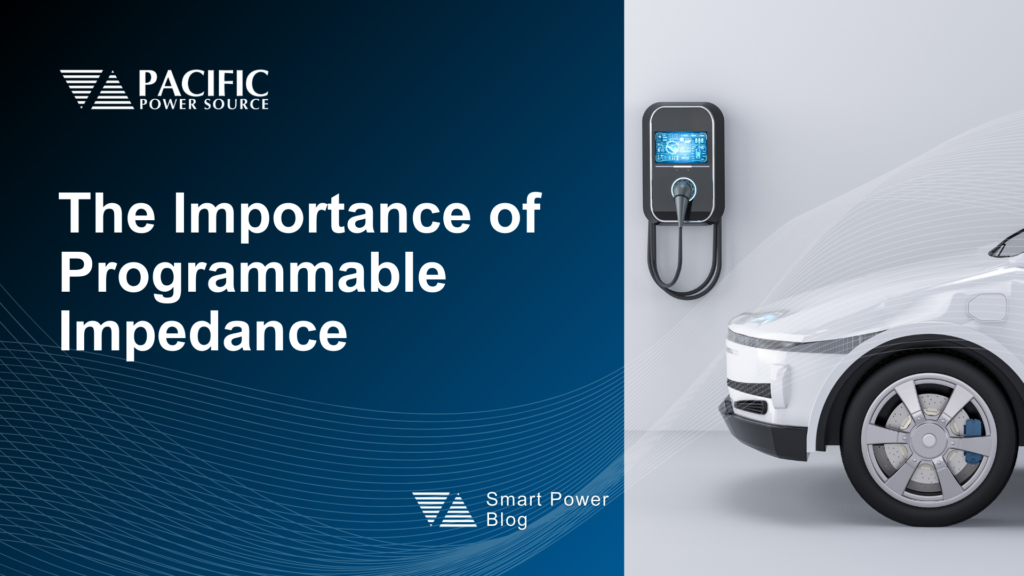Categories
Topics

What Is Programmable Impedance (Prog. Z)? Hate to disappoint, but programmable Z on an AC power source has nothing to do with getting sufficient sleep. Instead, the Z refers to the output impedance of the power source. A low AC source output impedance means there is little or no voltage drop at the output of […]
- Blogs

Irvine, California, February 2022 — Pacific Power Source is pleased to announce the release of its latest suite of test routines specifically designed to test AC products for compliance with Department of Defense Interface Standard Mil-Std-1399-300, “Aircraft Electric Power Characteristics”. This new software option expands Pacific Power Source Inc.’s growing portfolio of Defense related Power Compliance Test […]
- Blogs

What is the AC Power Input for my Application? Programmable AC power sources used for development and test applications convert locally available utility power to specific precision AC or DC output formats needed to test or control units under test. This is called “solid state power conversion” as active electronic circuitry is used rather than […]
- Blogs

Power Supplies and Output Power rating versus Voltage As a rule, power supplies are rated for maximum power output only at their maximum output voltage. That means that as the programmed output voltage is decreased, the power output capability decreases proportionally. For example, a 10kW rated power supply with a 0 to 100V voltage range […]
- Blogs

Critical Power Immunity Testing of DC Powered Equipment Reliable operation of on-board electrical equipment under all circumstance is a critical requirement to ensure the safety of passengers and crew. This is true for both AC powered and DC powered equipment. With the continued growth of on-board electrical systems, the amount and types of equipment that […]
- Blogs

Remote Control Computer control of test equipment – including AC and DC power sources – is a critical requirement for building automated test systems (ATE) and to a lesser extend engineering development lab experiments. Key requirements for this type of computer control are: Reliable communication to reduce or eliminate communication errors Data transfer speeds Industry […]
- Blogs

What are voltage modes? While all programmable AC power sources offer AC output mode, some also provide DC output mode. This may be useful for applications where only DC is required to power an EUT. However, a growing number of power related products are coming on the market than can operate from both AC grid […]
- Blogs

What is Voltage Distortion? Voltage distortion occurs when an AC output is purely sinusoidal but has small levels of voltage harmonics in addition to the fundamental sinewave frequency. This low level of voltage distortion is often difficult to see on an oscilloscope and requires a power analyzer or harmonics analyzer to quantify. Distortion is typically […]
- Blogs

For AC testing, requirements and test procedures found in Avionics test standards cover the following nominal AC Voltage levels: 200V/115V three phase, 400Hz and variable frequency 115V single phase, 60Hz, 400Hz and variable frequency 400V/230V three phase, 400Hz and variable frequency 26V single phase, 400Hz Some standards include 235Vac as well but these nominal levels […]
- Blogs

What is Load Regulation? Load regulation ensures programmed output voltage remains constant despite load variations It is calculated using the following formula: Where VLmin is the voltage at no load and VLmax is the voltage at maximum rated load. It is typically specified in % of full scale voltage. The lower the load regulation spec […]
- Blogs
